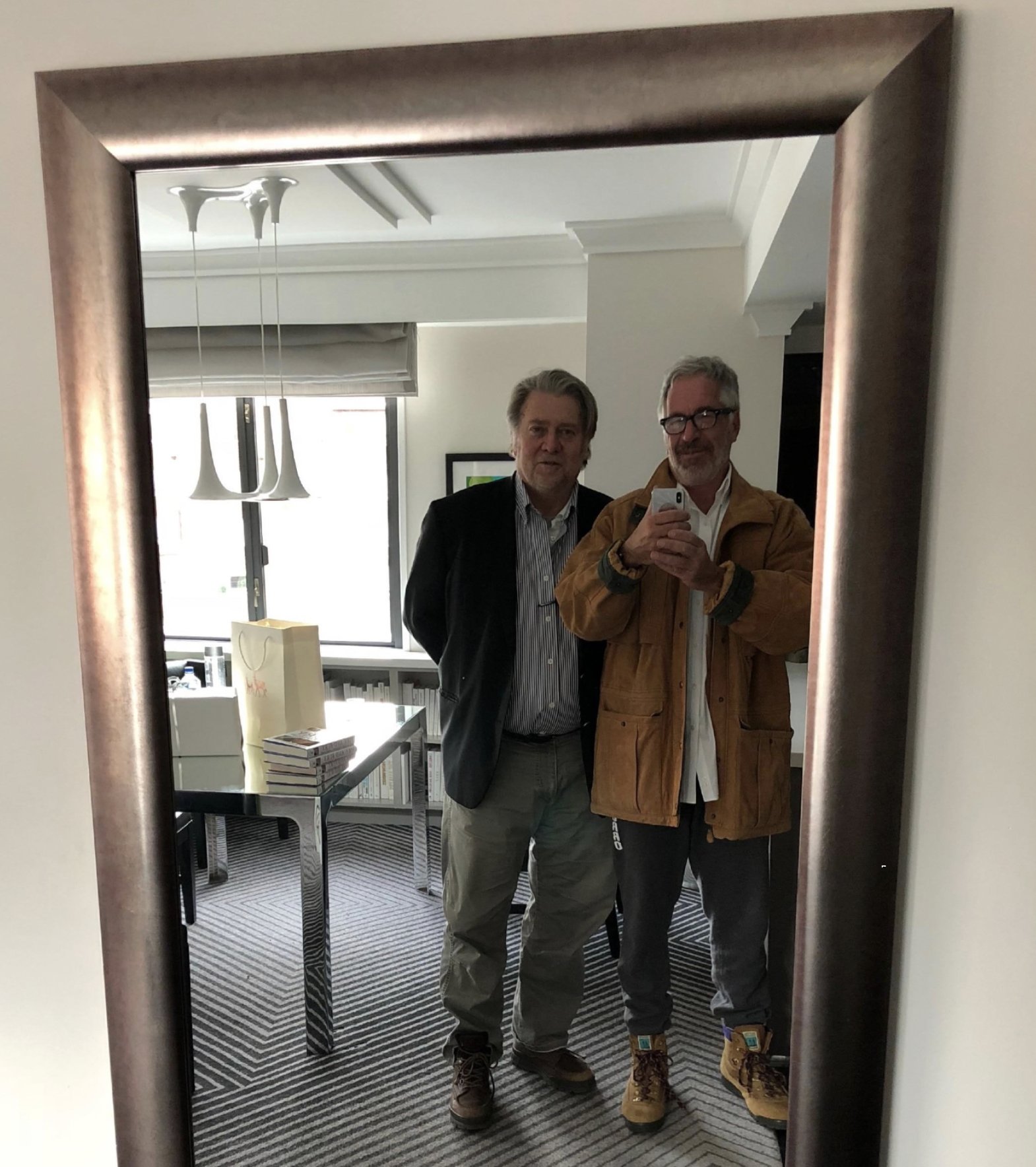America's Real Iron Dome
(excerpt, it is too long for locals)
patreon link to complete text:
https://www.patreon.com/posts/121302522?pr=true
The concept of an "Iron Dome" has recently gained traction in U.S. political discourse, with discussions centering on the need for a missile defense system to protect the nation from external threats. However, this narrative obscures a far more pervasive and insidious form of defense already in place: the propaganda machine that controls the American people and, by extension, the world through the military-industrial complex. This essay argues that America's real Iron Dome is not a physical shield against missiles but a psychological and ideological barrier that manipulates public perception, rewrites history, and silences dissent. Drawing on the works of James Bacque, Johann Wolfgang von Goethe, Noam Chomsky, and historical case studies, this essay will demonstrate how the real Iron Dome operates, how it has been maintained over time, and why it is beginning to show signs of rust.
The Propaganda Machine: America's Real Iron Dome
James Bacque's assertion that "what is known is not true and what is true is not known" encapsulates the essence of America's real Iron Dome. This dome is not made of steel or advanced technology but of narratives, half-truths, and outright lies propagated by a sophisticated propaganda apparatus. The goal of this apparatus is not to protect the nation from physical threats but to shield the ruling elite from scrutiny and maintain their grip on power. As Goethe famously observed, "None are more enslaved than those who falsely believe they are free." This quote underscores the insidious nature of the real Iron Dome: it convinces the public that they are free while systematically eroding their ability to discern truth from fiction.
Noam Chomsky's Manufacturing Consent provides a framework for understanding how this system operates. Chomsky argues that the media, far from being a neutral purveyor of information, serves as a tool for shaping public opinion in ways that benefit the powerful. By controlling the flow of information, the elite can manufacture consent for policies that might otherwise be met with widespread opposition. This process is not new; it has been refined over decades, if not centuries.
Historical Precedents: The Creel Committee and Edward Bernays
The Creel Committee during World War I and the work of Edward Bernays offer early examples of the real Iron Dome in action. The Creel Committee, formally known as the Committee on Public Information, was tasked with rallying public support for the war effort. Through a combination of propaganda, censorship, and outright deception, the committee succeeded in transforming widespread anti-war sentiment into fervent patriotism. This campaign demonstrated the power of propaganda to manipulate public opinion on a massive scale.
Edward Bernays, often referred to as the father of public relations, built on these techniques to develop more sophisticated methods of shaping public perception. Bernays understood that the key to controlling a population was not to force them to comply but to make them want to comply. By tapping into people's desires, fears, and insecurities, Bernays and his successors have been able to engineer consent for policies that serve the interests of the elite.
Rewriting History: The Case of the Morgenthau Plan
One of the most striking examples of how the real Iron Dome operates is the way history is rewritten to obscure uncomfortable truths. The Morgenthau Plan, proposed by U.S. Treasury Secretary Henry Morgenthau Jr. in the aftermath of World War II, called for the deindustrialization of Germany to prevent it from ever again becoming a military threat. The plan was initially embraced by key figures in the U.S. government, including President Franklin D. Roosevelt. However, after its details were leaked to the press, it faced widespread criticism and was eventually abandoned in favor of the Marshall Plan.
Despite its historical significance, the Morgenthau Plan has been largely erased from public memory. When it is mentioned, it is often dismissed as a fringe proposal that was never seriously considered. This rewriting of history serves to shield the public from the uncomfortable truth that the U.S. government once contemplated a policy that would have condemned millions of Germans to starvation and poverty. By erasing this chapter from history, the real Iron Dome ensures that the public remains ignorant of the darker aspects of U.S. foreign policy.
The Marginalization of Truth-Tellers: James Bacque's Other Losses
James Bacque's Other Losses provides a devastating case study in how the real Iron Dome operates. The book documents the fate of German prisoners of war (POWs) in the aftermath of World War II, arguing that millions died as a result of deliberate Allied policies. Bacque's research challenges the official narrative of the war as a moral crusade against evil, revealing instead a story of callous indifference and outright cruelty.
Key Claims of Other Losses
1. Mass Deaths of German POWs: Bacque estimates that between 750,000 and 1.5 million German POWs died in American and French custody after the war. These deaths were not the result of isolated incidents but of systematic neglect and deliberate policies. POWs were denied adequate food, shelter, and medical care, leading to widespread starvation and disease.
2. Eisenhower's Responsibility: Bacque places much of the blame on General Dwight D. Eisenhower, who oversaw the Allied occupation of Germany. Eisenhower's policies, according to Bacque, were designed to punish the German people collectively, regardless of their individual guilt or innocence. This included the creation of "Rheinwiesenlager," open-air camps where hundreds of thousands of German soldiers were held in appalling conditions.
3. Suppression of the Truth: Bacque argues that the Allied powers went to great lengths to cover up the scale of the tragedy. Death certificates were falsified, records were destroyed, and survivors were intimidated into silence. This systematic suppression of the truth ensured that the public remained unaware of the atrocities committed in their name.
4. Historical Denial: Despite the wealth of evidence presented by Bacque, his findings have been met with fierce resistance from historians and policymakers. Critics have dismissed his work as exaggerated or outright false, and he has been marginalized within the academic community. This response is emblematic of how the real Iron Dome deals with those who challenge the official narrative: they are attacked, discredited, and silenced.
Case Study: The Rheinwiesenlager
One of the most harrowing examples from Other Losses is the Rheinwiesenlager, a series of makeshift camps established by the Allies in 1945. These camps were overcrowded, unsanitary, and lacked basic necessities. Bacque describes how prisoners were forced to sleep in open fields, exposed to the elements, with little or no food. Many died of starvation, disease, or exposure, while others were shot for attempting to escape. The conditions in the Rheinwiesenlager were so horrific that they have been compared to the Nazi concentration camps.
Despite the scale of the tragedy, the Rheinwiesenlager have been largely erased from public memory. When they are mentioned, it is often to downplay their significance or to shift the blame onto the Germans themselves. This rewriting of history serves to shield the public from the uncomfortable truth that the Allies were capable of committing atrocities on a massive scale.
The Rusting Dome: Cracks in the Propaganda Machine
While the real Iron Dome has been remarkably effective, it is not invincible. Over time, the constant barrage of propaganda has begun to wear thin, and cracks are starting to appear in the facade. The rise of the internet and social media has made it more difficult for the elite to control the flow of information. Alternative narratives, once confined to the fringes, are now able to reach a wider audience. This has led to a growing sense of disillusionment among the public, as more and more people begin to question the official narrative.
The rusting of the Iron Dome is also evident in the increasing polarization of American society. As the propaganda machine struggles to maintain its grip on public opinion, it has resorted to increasingly extreme tactics, further eroding its credibility. The result is a population that is deeply divided and increasingly skeptical of the institutions that are supposed to serve them.
The Rusty but Robust Iron Dome
America's real Iron Dome—the propaganda machine that controls public perception, rewrites history, and silences dissent—has undoubtedly begun to show signs of rust. The rise of alternative media, the erosion of trust in institutions, and the growing polarization of society all point to cracks in the facade. Yet, despite these vulnerabilities, the Iron Dome remains robust enough to shield the American public from confronting modern-day genocides and atrocities committed in their name. Its durability lies in its ability to manipulate narratives, obscure uncomfortable truths, and maintain the illusion of moral superiority. This is evident when we examine the aftermath of World War II, particularly the Nuremberg Trials, the Morgenthau Plan, and the subversion of the Geneva Conventions. These historical events reveal a pattern of victors' justice, where the crimes of the defeated are magnified while those of the victors are erased or justified.
The Nuremberg Trials and the Morgenthau Plan: A Study in Hypocrisy
The Nuremberg Trials are often held up as a triumph of justice, a moment when the world came together to hold the perpetrators of the Holocaust accountable for their crimes. While the trials were undoubtedly a landmark in the development of international law, they also served as a tool for the victors to reinforce their moral authority and obscure their own transgressions. The Morgenthau Plan, which called for the deindustrialization of Germany and the reduction of its population to a subsistence-level agrarian society, reveals the darker side of Allied intentions. Although the plan was never fully implemented, its existence underscores the fact that the victors were not above contemplating policies that would have resulted in widespread suffering and death.
The contrast between the crimes prosecuted at Nuremberg and the actions taken by the Allies is stark. At Nuremberg, German leaders were tried for crimes against humanity, including the systematic extermination of millions of Jews, Romani, and other marginalized groups. Yet, while the Allies condemned these atrocities, they themselves were responsible for policies that led to the deaths of hundreds of thousands, if not millions, of German civilians and POWs. The Rheinwiesenlager, as documented by James Bacque in Other Losses, is a prime example. By simply reclassifying German soldiers as "Disarmed Enemy Forces" (DEF) rather than POWs, the Allies were able to circumvent the Geneva Conventions and justify the inhumane treatment of their captives. This legal sleight of hand allowed the victors to avoid accountability for their actions while maintaining the appearance of moral rectitude.
Subverting the Geneva Conventions: The DEF Loophole
The Geneva Conventions, established to protect the rights of prisoners of war, were deliberately subverted by the Allies in the aftermath of World War II. By reclassifying German soldiers as DEF, the Allies effectively stripped them of the protections afforded by international law. This allowed for the creation of the Rheinwiesenlager, where hundreds of thousands of German soldiers were held in conditions that can only be described as barbaric. Many died of starvation, disease, or exposure, while others were shot for attempting to escape. The fact that these atrocities were committed by the very nations that had just condemned the crimes of the Nazis is a testament to the power of the Iron Dome to shield the public from uncomfortable truths.
The DEF loophole also highlights the hypocrisy of the victors' justice. While the Allies prosecuted German leaders for war crimes, they themselves were guilty of similar offenses. The difference lies not in the nature of the crimes but in the ability of the victors to control the narrative. By framing their actions as necessary for the reconstruction of Europe and the prevention of future wars, the Allies were able to justify policies that would have been condemned as criminal if carried out by the defeated.
The Iron Dome and Modern-Day Genocides
The durability of the Iron Dome is evident in its ability to shield the American public from confronting modern-day genocides and atrocities. From the wars in Iraq and Afghanistan to the drone strikes in Yemen and Somalia, the U.S. government has consistently been able to justify its actions by framing them as necessary for national security or the promotion of democracy. The propaganda machine ensures that the public remains unaware of the true cost of these policies, both in terms of human lives and moral integrity.
The Iron Dome also operates by marginalizing those who seek to expose the truth. Whistleblowers like Edward Snowden and Chelsea Manning have been vilified and imprisoned, while journalists who report on U.S. war crimes are often ignored or discredited. This ensures that the public remains insulated from the realities of modern warfare and the atrocities committed in their name.
Conclusion: The Rusty but Enduring Iron Dome
America's real Iron Dome—the propaganda machine that controls public perception, rewrites history, and silences dissent—has undoubtedly begun to rust. The rise of alternative media, the erosion of trust in institutions, and the growing polarization of society all point to cracks in the facade. Yet, despite these vulnerabilities, the Iron Dome remains robust enough to shield the American public from confronting modern-day genocides and atrocities. Its durability lies in its ability to manipulate narratives, obscure uncomfortable truths, and maintain the illusion of moral superiority.
truncated due to length restrictions full text:
https://www.patreon.com/posts/121302522?pr=true
















